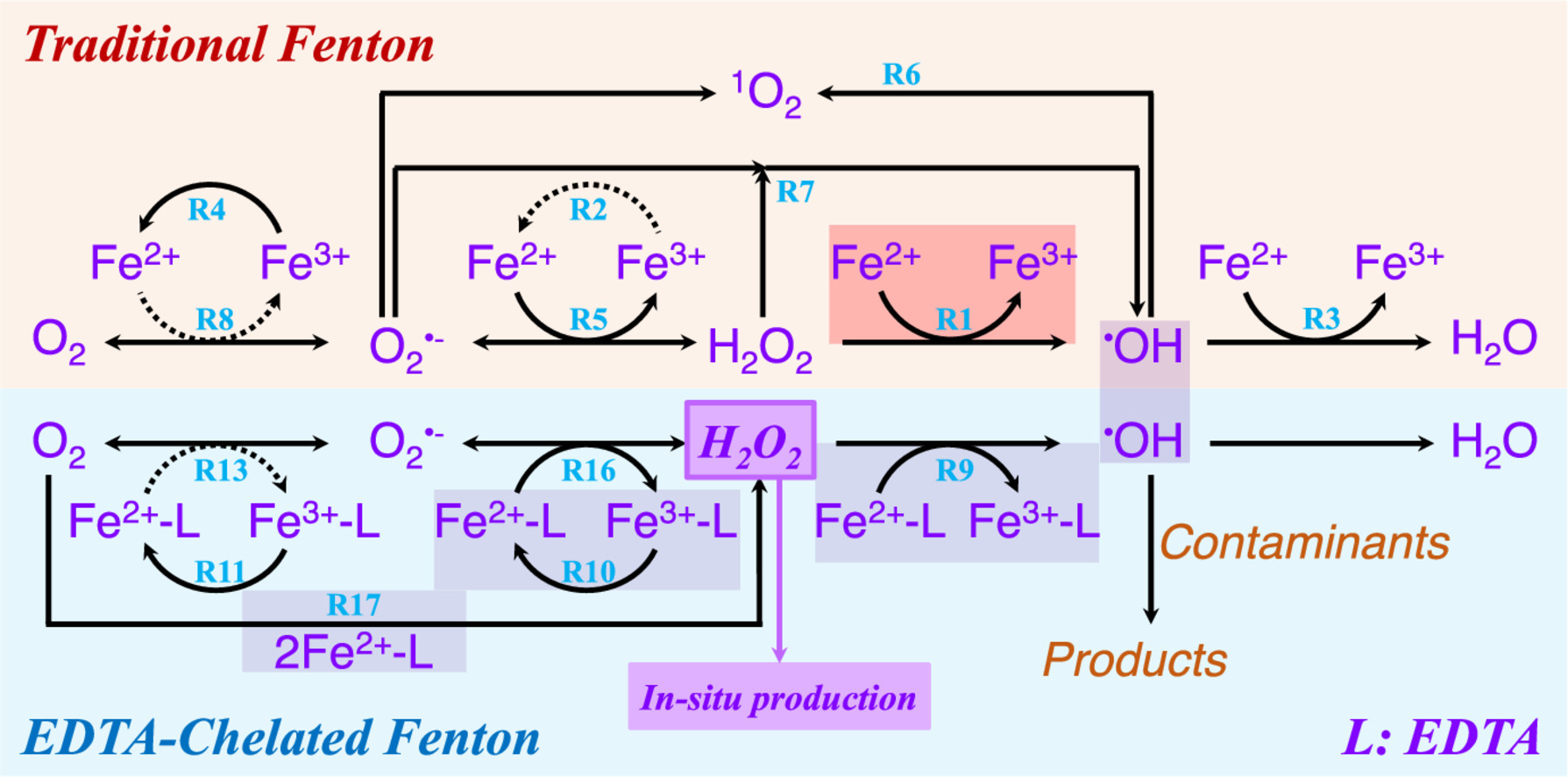Yuan Gao, Pengyi Wang, Yu Chu, Fan Kang, Yue Cheng, Eveliina Repo, Mingbao Feng, Xin Yu, Huabin Zeng
Water Research
https://doi.org/10.1016/j.watres.2023.120826
Published: 3 November 2023
Abstract
The Fenton system was a generation system of reactive oxygen species via the chain reactions, which employed H2O2 and O2 as radical precursors and Fe2+/Fe3+ as electron-donor/acceptor for triggering or terminating the generation of radicals. Recent work mainly emphasized the Fe2+- activated H2O2 and the application of in-situ generated •OH, while neglecting other side-reactions. In this work, EDTA (Ethylene diamine tetraacetic acid) was employed as a chelating agent of iron ions, which simultaneously changed the redox property of coordinated iron. The Fe2+-EDTA complexes in the presence of dissolved oxygen enabled the two-electron transfer from Fe2+ to O2 and the in-situ production of H2O2, which further activate H2O2 for yielding •OH. Meanwhile, coordinated Fe3+ exhibited non-negligible reactivity toward H2O2, which was higher than that of free Fe3+ in the traditional Fenton system. The complexation of EDTA with Fe3+ could enhance the Fe2+ generation reaction by the H2O2, accompanied by the O2•− formation. The enhancement of O2•− formation and Fe2+-EDTA regeneration induced the subsequent H2O2 activation by Fe2+-EDTA, thus accelerating the Fe3+-EDTA/Fe2+-EDTA cycle for simultaneously producing O2•− and •OH. To sum up, the EDTA-chelated Fenton system extended the applicable pH range to circumneutral/alkaline level and tuned the redox property of coordinated iron for diversifying the •OH production routes. The research reinterpreted the chain reactions in the Fenton system, revealing another way to enhance the radical production or other property of the Fenton/Fenton-like system.
